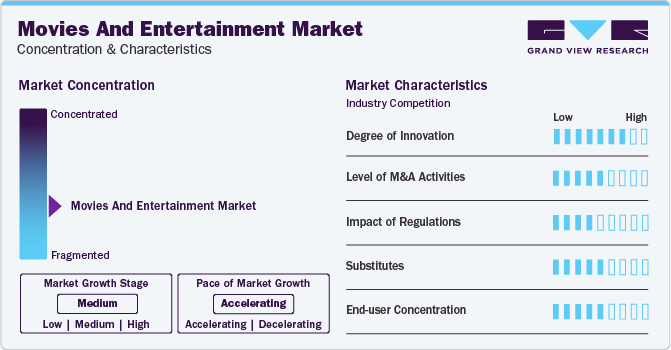
The way we consume entertainment has changed dramatically in the past decade—and so has the way films are promoted. Gone are the days when moviegoers relied solely on newspaper ads, radio jingles, or posters on city walls to learn about upcoming releases. Today, we live in a world where a single Instagram reel or YouTube teaser can generate millions of views overnight, creating massive buzz before a film even hits the big screen or streaming platform.
Digital marketing has emerged as the new spotlight of the film industry. Whether it’s a high-budget action thriller or a low-budget indie drama, success now depends not only on star power or storyline but also on how effectively a film reaches and connects with its target audience online.
From pre-release promotions and real-time fan engagement to influencer collaborations and meme marketing, digital platforms have opened the door to innovative storytelling and interactive audience experiences. Social media campaigns, email blasts, SEO-optimized trailers, and targeted ads are helping filmmakers build hype, measure impact, and create loyal fanbases—all with precision and scalability.
In this blog, we’ll explore why digital marketing is not just a trend but a necessity in modern film promotions. We’ll break down the key strategies that studios and indie filmmakers alike are using to turn their movies into cultural phenomena—one click, one share, and one view at a time.
Table of Contents
Sr. Headings
1). Introduction
2). The Changing Landscape of Film Promotion
3). Importance of Social Media in Film Marketing
4). Influencer Collaborations & Fan Engagement
5). YouTube Trailers, Teasers & Viral Video Campaigns
6). SEO and Paid Advertising for Movies
7). Case Studies of Successful Digital Film Campaigns
8). FAQ’s
9). Conclusion

Introduction
Imagine a blockbuster film with a stellar cast, a compelling storyline, and breathtaking cinematography—but no one knows it’s releasing next Friday. No buzz, no hashtags, no trailer trending on YouTube. In today’s digital-first world, that film would likely struggle at the box office, no matter how good it is.
Welcome to the new era of cinema, where visibility equals viability. Whether a movie is destined for theatrical release, an OTT platform, or a hybrid model, digital marketing has become the backbone of film promotion. The modern audience lives online—scrolling, watching, liking, and sharing—and it’s in this digital realm that films now fight for attention, relevance, and success.
The transition from traditional to digital marketing isn’t just a shift in tools—it’s a shift in mindset. It’s no longer just about pushing content out to the audience; it’s about pulling the audience into a conversation, a universe, a movement. Films today are marketed like brands, and their digital strategies are often as creative and well-orchestrated as the films themselves.
From the first-look posters shared on Instagram, teaser countdowns on Twitter/X, and interactive trailers on YouTube, to viral TikTok trends and behind-the-scenes reels, digital campaigns start months—sometimes a year—before a movie’s actual release. These strategies build hype, generate curiosity, and most importantly, convert interest into ticket sales or streaming clicks.
Moreover, data-driven targeting through Google Ads, Facebook Pixel, and remarketing tools ensures that film promotions reach the right audience at the right time. Influencers, fan clubs, and digital communities act as amplifiers, turning content into conversations and conversations into conversions.
In this blog, we’ll dive deep into why digital marketing is not just an add-on but a critical driver of film success in today’s competitive entertainment landscape. You’ll discover how filmmakers, production houses, and marketing agencies are leveraging digital tools to shape the future of movie promotions—and why no film, big or small, can afford to ignore it.
The Changing Landscape of Film Promotion
Traditional marketing methods—TV spots, newspaper ads, hoardings, radio jingles, and even press events—were once the primary tools for promoting a film. They worked well in the pre-digital era when audience attention was focused on a few mass media channels. But today, those methods alone are no longer enough to create the kind of buzz and reach that films need to succeed.
Audiences Have Moved Online
Modern viewers spend the majority of their time on digital platforms—scrolling through Instagram, watching YouTube, consuming content on OTT platforms, or participating in fandoms on Reddit. A significant portion of the younger generation doesn’t read newspapers or watch cable TV. So relying solely on traditional media misses a huge chunk of the target audience, especially Gen Z and Millennials.
Limited Reach and High Costs
Running ads in print media or securing prime-time TV slots is expensive and lacks the precise targeting that digital platforms offer. Traditional marketing casts a wide net but with no guarantee that the message reaches interested viewers. In contrast, digital marketing allows you to target by demographics, interests, location, and behavior, making every rupee spent more efficient and measurable.
One-Way Communication vs. Engagement
Traditional methods are mostly one-way communication—they inform, but they don’t interact. Today’s audience expects to engage with content. They want to comment on trailers, share memes, participate in challenges, and interact with cast members on social media. Digital platforms enable that real-time two-way dialogue that builds stronger emotional connections.
Shorter Attention Spans Require Creative Agility
With users scrolling through hundreds of posts and videos daily, the window to grab their attention is incredibly short. Digital campaigns allow for quick adaptations and A/B testing—something traditional formats simply can’t do. A poster in a newspaper can’t be edited after release, but a social media post can be updated, boosted, or retargeted within minutes.
Lack of Performance Tracking
Traditional marketing offers vague feedback. How do you know how many people saw your billboard or heard your radio spot? You don’t. Digital marketing provides deep insights into impressions, clicks, conversions, watch time, and user behavior, allowing filmmakers and marketers to make smarter decisions and optimize campaigns on the fly.
Case in Point: Big Films Still Go Digital
Even the biggest productions with enormous budgets and TV presence still rely heavily on digital channels. Why? Because they know that a film today can trend online before it’s even released, and that trend can translate into massive first-day collections or streaming views. Traditional marketing is now just a supporting role—the lead role belongs to digital.

Importance of Social Media in Film Marketing
Content marketing has become one of the most powerful tools in a filmmaker’s promotional arsenal. It goes beyond traditional advertising by providing value, storytelling, and engagement—building anticipation and emotional investment long before a film hits the screen.
Telling the Story Before the Story
The beauty of content marketing lies in its ability to tease, reveal, and deepen the narrative before the actual movie is released. Through blog articles, social media posts, teaser trailers, exclusive interviews, and behind-the-scenes (BTS) content, filmmakers give audiences a taste of what’s to come. It’s about creating an immersive experience, a digital world that pulls people into the film’s universe.
For instance, a superhero film might post short origin-story clips on Instagram, while a romantic drama might share curated quotes or emotional moments from the script. This gradual storytelling process helps build a connection with the characters and the plot, making viewers more likely to watch and recommend the film.
Behind-the-Scenes (BTS) Content Humanizes the Brand
Audiences love seeing what happens beyond the final edit—whether it’s the fun on set, the making of a song, bloopers, costume trials, or even how a VFX scene came together. Sharing BTS footage humanizes the cast and crew, making the audience feel like insiders. It’s an excellent way to generate loyalty and a sense of ownership among fans, especially during long production cycles.
Character and Actor Spotlights
Content that focuses on individual characters or actors builds deeper fan engagement. Character posters, intro reels, or actor interviews discussing their role and preparation spark curiosity. These posts often perform well because fans of a specific actor or franchise will share them widely, expanding the film’s organic reach.
Countdowns, First-Looks & Hashtag Campaigns
Strategic content drops—like “First Look on Friday,” “Countdown to Trailer,” or “Behind-the-Scenes Wednesdays”—create a predictable rhythm and build anticipation. Custom hashtags for each campaign (e.g., #PathaanFirstLook or #IntoTheSpiderVerseBTS) make it easier to track and engage with conversations happening around the content.
Cross-Platform Distribution = More Reach
Content marketing isn’t limited to one platform. A teaser might drop on YouTube, while the BTS video goes on Instagram Reels, a blog article explaining the film’s theme appears on the official website, and the cast does a Twitter/X Q&A. This multi-platform distribution ensures that your film is everywhere your audience is.
Interactive and Shareable Content
Quizzes, polls, AR filters, fan-art reposts, or “Which Character Are You?” personality tests are forms of interactive content marketing. These formats not only entertain but also encourage fans to participate and share, leading to viral engagement.
Content Builds Communities
Over time, consistent and well-executed content builds a community around the film. Fans start creating their own content—fan theories, memes, countdown edits, and more. This user-generated content (UGC) becomes free promotion for the film and keeps the buzz alive well beyond the release date.
Influencer Collaborations & Fan Engagement
Today’s audiences trust influencers more than celebrity endorsements. Collaborating with content creators, YouTubers, or Instagram influencers can make a film trailer or song go viral. Moreover, fan-made content, challenges, and contests help in building a strong emotional connection between the audience and the movie.
In today’s digital landscape, influencers act as modern-day movie promoters, often with more reach and relatability than traditional celebrities. Collaborating with influencers—whether they’re film reviewers, lifestyle vloggers, meme creators, or regional content creators—allows films to tap into highly engaged niche communities. A popular Instagram influencer doing a humorous reel with the film’s signature dialogue or a YouTuber reacting to the trailer can spark virality overnight. What’s powerful about these collaborations is their authenticity—audiences trust their favorite influencers more than paid ads, making their recommendations feel like genuine excitement rather than promotion.
But the magic doesn’t stop with influencers. Fan engagement strategies such as virtual contests, watch parties, comment shoutouts, and hashtag challenges help viewers become part of the campaign. Studios are even including top fan creators in premiere invites or reposting user-made edits, giving fans a spotlight and creating deeper loyalty. This two-way interaction transforms audiences from passive viewers into active promoters, building an organic buzz that paid campaigns simply can’t replicate.
YouTube Trailers, Teasers & Viral Video Campaigns
YouTube remains the go-to platform for official trailers and teasers. The number of views a trailer gets within 24 hours has become a benchmark of its expected success. Brands also run teaser ads before relevant content, ensuring high visibility among target demographics.
SEO and Paid Advertising for Movies
Just like any other brand, movies benefit from search engine optimization (SEO) and paid advertising (PPC). Targeted ads on Google, YouTube, and social platforms ensure that promotional content reaches the right audience based on their interests, browsing habits, and location. A well-optimized movie website or microsite can improve discoverability and ticket sales.
Case Studies of Successful Digital Film Campaigns
Jawan (2023): Built massive hype with teaser reveals, hashtag challenges, and fan contests that trended for weeks.
RRR (2022): Used aggressive social media and YouTube campaigns to win global attention, resulting in an Oscar win.
The Kashmir Files: Gained organic traction through viral WhatsApp messages and influencer backing without major studio promotion.
These examples show how digital marketing levels the playing field, allowing small-budget films to compete with mega-productions.
Final Thoughts:
As the film industry continues to evolve, embracing digital marketing is no longer optional—it’s essential for survival and success.


Digital marketing allows films to reach a global, targeted audience quickly and cost-effectively. It offers interactive engagement, real-time feedback, and measurable results—making it essential for building buzz, driving ticket sales, and increasing streaming viewership.
The most effective platforms include Instagram, YouTube, Twitter/X, Facebook, and TikTok, depending on the target audience. YouTube is great for trailers and behind-the-scenes content, while Instagram and TikTok work well for reels, challenges, and influencer collaborations.
Ideally, at least 3–6 months before release. For big-budget or franchise films, the campaign may start even earlier with teaser posters, first looks, and slow content reveals to build anticipation over time.
Absolutely! Indie films can use cost-effective strategies like regional influencer tie-ups, targeted Facebook/Instagram ads, local fan communities, and WhatsApp groups to create buzz without a large budget.
Success is tracked through key performance indicators (KPIs) like trailer views, engagement rates, hashtag trends, social shares, click-through rates (CTR), and ultimately conversions such as ticket sales or OTT views.
Conclusion
In today’s hyper-connected world, a film without a digital marketing strategy is like a ship without a compass. Whether you're promoting a big studio release or a small indie project, digital tools help you connect, engage, and convert your audience. Digital marketing doesn't just build awareness—it drives conversations, influences decisions, and creates a community around the movie.
OCP Academy
(A Unit of OCP Foundation)
Learning Today, Leading Tomorrow

